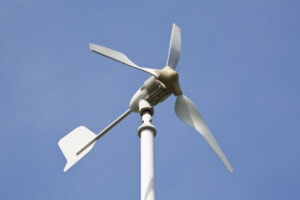
Wind energy is a crucial component of the rapidly growing renewable energy industry, which is essential in the fight against climate change. Currently, renewable energy accounts for over 20% of power generation in the US, and wind energy is the second-largest source of renewable energy worldwide, trailing only hydropower. Notably, wind energy is expanding at a faster rate than many other forms of renewable energy. To better understand wind energy, it’s important to know how it works, whether it’s renewable, and how you can use a home wind turbine to power your home.
Whether you live in a two-bedroom house in Salem, OR, or a rental home in Wilmington, NC, read on to learn everything you need to know about wind energy.
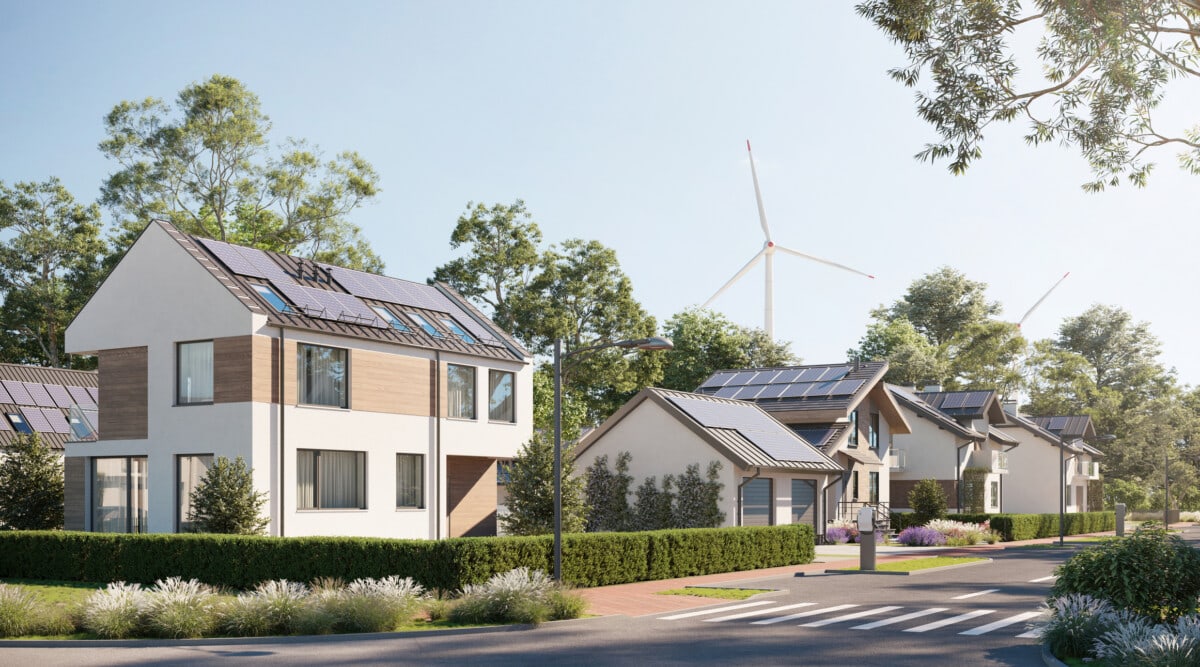
How to use wind energy at home
You can use wind energy at home by installing a small wind electric system. These systems typically consist of a wind turbine, a tower to support the turbine, a charge controller, and batteries to store the energy generated by the turbine. Professional installers will help determine the size of the turbine you need and manage the installation.
If you have the space, budget, and weather patterns, a small wind system can reduce your electricity bill and even provide power during an outage (as long as it’s hooked up to some form of energy storage.)
Can a wind turbine power your home?
In most areas of the US, a small wind turbine alone does not provide enough electricity to power an entire home. However, you can still use a wind turbine as a supplemental source of energy.
A typical home uses around 10,700 kilowatt-hours of electricity per year, or 877 per month. Wind turbines range in size from 400 watts to 20 kilowatts, with 1.5 kilowatts being the average. Using these numbers, a 1.5-kilowatt turbine in a location with a 14 mile-per-hour annual wind speed will meet the needs of a home requiring 300 kilowatt-hours per month. This is far below the average 877 kilowatt-hours most homes use every month.
Location is key as well. Wind turbines typically operate at or above their average capacity only about 40% of the time, while producing little or no energy for the remaining 60%. Therefore, relying solely on wind turbines for home energy needs isn’t possible. This is especially true in urban areas with many buildings and milder weather.
In order to meet your home’s entire energy needs, you would need a 5-15 kilowatt small wind turbine in an area that receives strong and near-constant wind. This isn’t possible for most people, so consider installing a wind turbine alongside solar panels or a microhydropower system.
Pros and cons of installing a wind turbine at home
While wind energy has many benefits, there are also some important downsides. Let’s dive into some pros and cons of wind energy.
Pros
- Clean and renewable: Wind turbines produce clean energy by using wind, which is an infinitely renewable source of energy. Wind turbines, however, are not entirely renewable and require land and resources to build and maintain.
- Allows for energy independence: Small wind electric systems provide an opportunity for individuals and communities to become more self-sufficient. By generating electricity from the wind, people can reduce their reliance on the grid and be less vulnerable to power outages or other disruptions.
- Cost-effective: Small wind electric systems are a low-cost source of renewable energy. Large wind farms, the primary method used in the US to harness wind energy, are also one of the lowest-cost energy sources available.
- Great for rural areas: Wind energy generation is great for agricultural and multi-use working landscapes, including farms and coastal communities.
Cons
- Impacts wildlife: If you have a small wind electric system, it’s important to be aware of potential negative impacts on wildlife. While significantly lower risk than large wind farms, small turbines can still negatively impact wildlife, especially birds and other small creatures. You may also need to comply with local laws that protect certain species of plants and animals.
- Strong wind is hard to reach: Wind is often strongest in remote and rural areas, which can be difficult to reach and may make it unrealistic to install a small wind system on your property.
- Noisy: Turbine blades produce noise and can be an eyesore. These can have environmental and aesthetic impacts on communities and other wildlife.
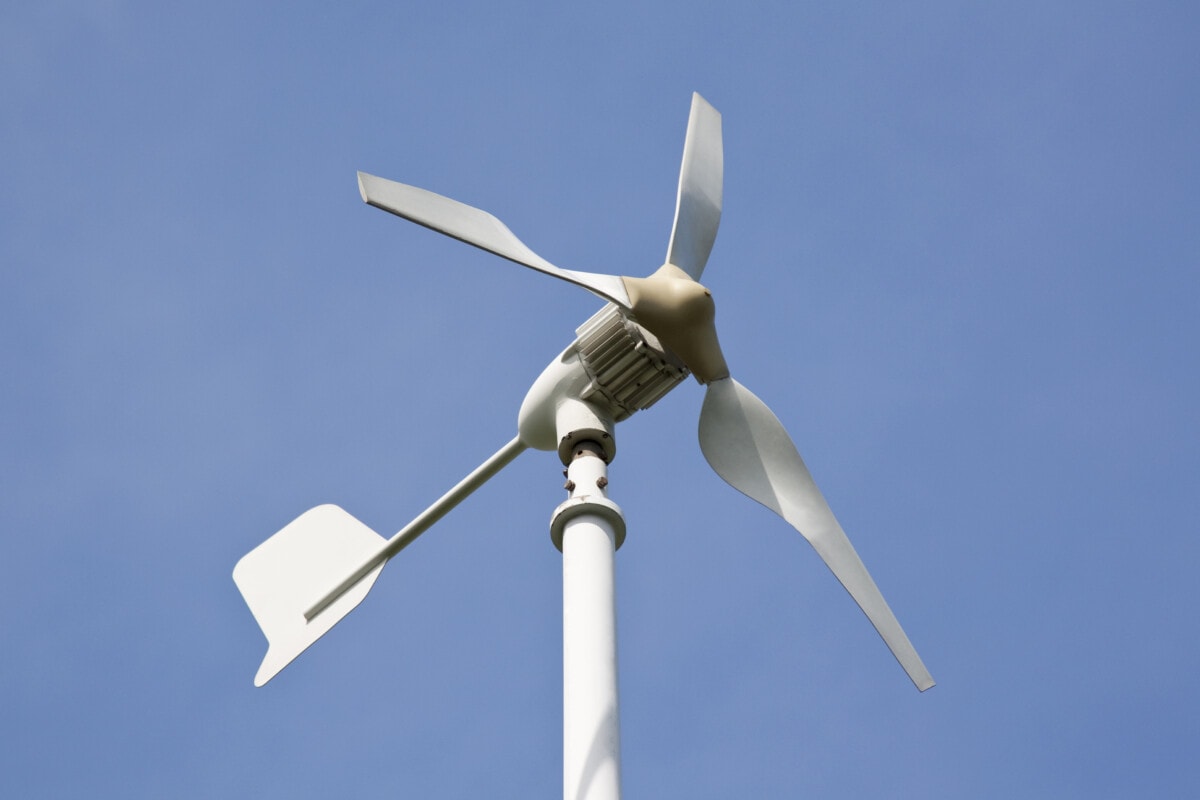
Factors to consider before installing a wind turbine on your property
It’s essential to keep your local weather patterns, zoning laws, and site restrictions in mind, as municipalities can be strict and may not allow a wind turbine on your home’s lot. Also, if your home doesn’t receive an annual average wind speed of at least nine miles per hour, the benefits of installing a system may be negligible.
Additionally, wind turbines aren’t as reliable as other renewable energy sources, such as solar panels. When there isn’t wind, the turbine won’t produce electricity. Solar panels, on the other hand, are still partially effective even during cloudy and rainy weather.
Cost considerations for installing a small wind electric system
The cost of a small wind system depends on where you live and the quality and size of the wind system you want. In general, small wind turbines cost between $3,000 and $5,000 for every kilowatt of power capacity. The initial cost of installation, including permitting and zoning, may be high, but the long-term savings on electricity bills and potential government incentives may make it worth it.
It’s also important to evaluate the potential energy output and the estimated savings over the life of the system compared to the initial installation cost. Additionally, consider the costs of regular maintenance and repairs. Conduct thorough research and seek professional advice before installing a small wind electric system.
Are there companies that will supply wind energy to your home?
Retail electricity providers can supply renewable electricity, including wind power, to homes. However, they can only operate in deregulated energy markets (as opposed to regulated energy markets), which allow for private companies to generate and provide electricity. Retail electricity providers offer many types of electricity, and a growing number are offering renewable energy as an option.
If you live in a state with a deregulated energy market, you can purchase a green energy plan to ensure you’re receiving power from renewable sources while supporting renewable energy development.
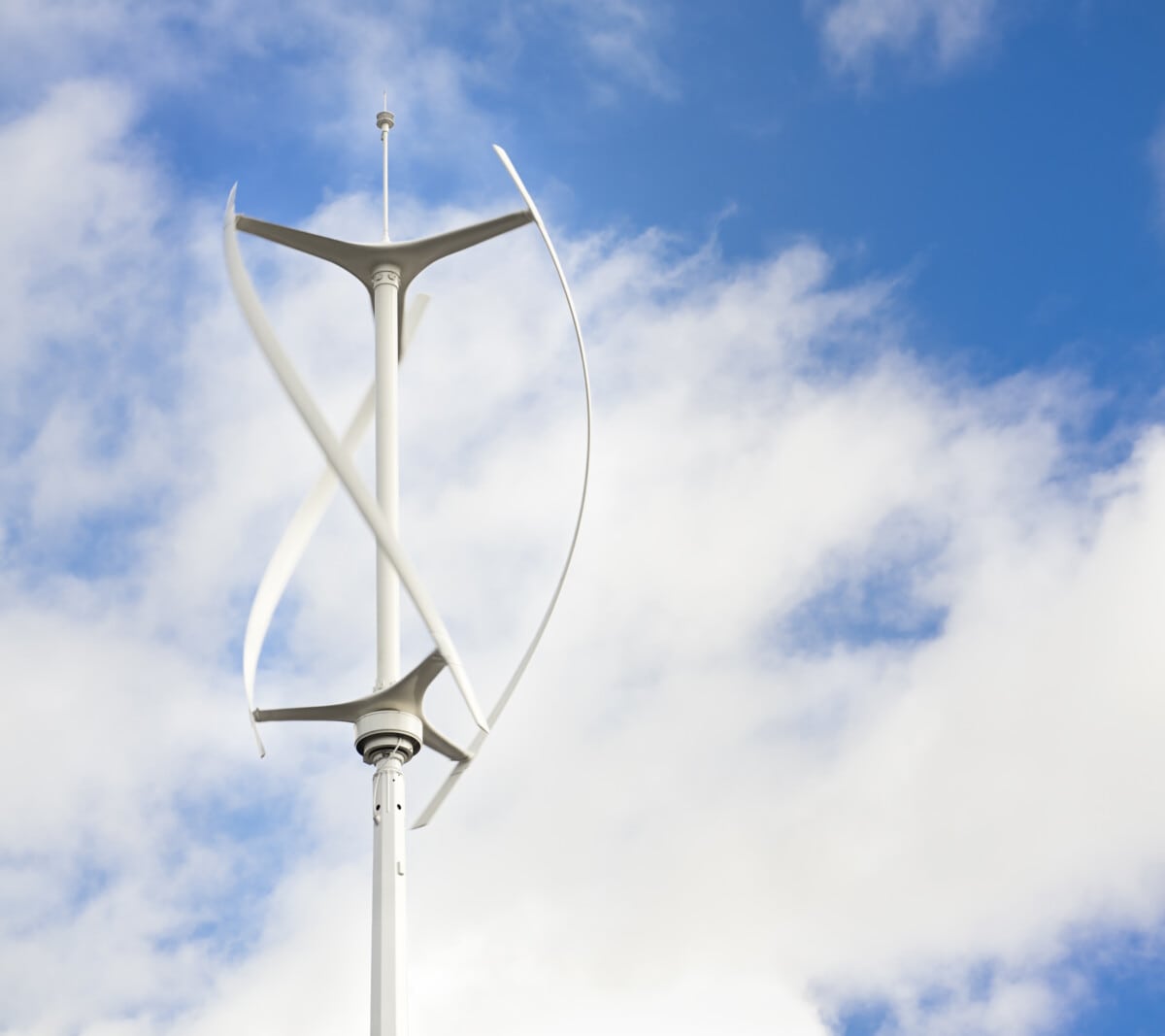
Is wind energy renewable?
Yes, wind energy is an unlimited renewable energy source. Solar heating produces wind, which is a natural process that is clean, bountiful, and continuous. However, wind energy is not as accessible or consistent as solar energy, as it relies on regional weather patterns and is often stronger in remote locations.
Additionally, wind turbines, the primary method we use to harness the kinetic energy from the wind, are only 85-95% recyclable and are not renewable. The body and electronics are generally easy to recycle, but turbine blades are not and only last about 25 years. Recyclable blades are being developed, but aren’t widely available.
Despite these challenges, wind energy has become a major player in the global push towards renewable energy, providing a sustainable solution to our energy needs.
How much energy does a wind turbine generate?
On average, a single modern wind turbine can generate anywhere from 2 to 6 megawatts of electricity per hour, enough to power hundreds or thousands of homes. However, actual energy production and efficiency can vary widely depending on environmental conditions, maintenance, and the size of the turbines.
Today, nearly 70,000 large wind turbines across the country generate a combined 140 gigawatts of power, enough to power the equivalent of 43 million homes.
A small wind turbine for a single home can only produce up to 20 kilowatts, which is 1% of the amount of a standard wind turbine and is not enough to power an entire household.
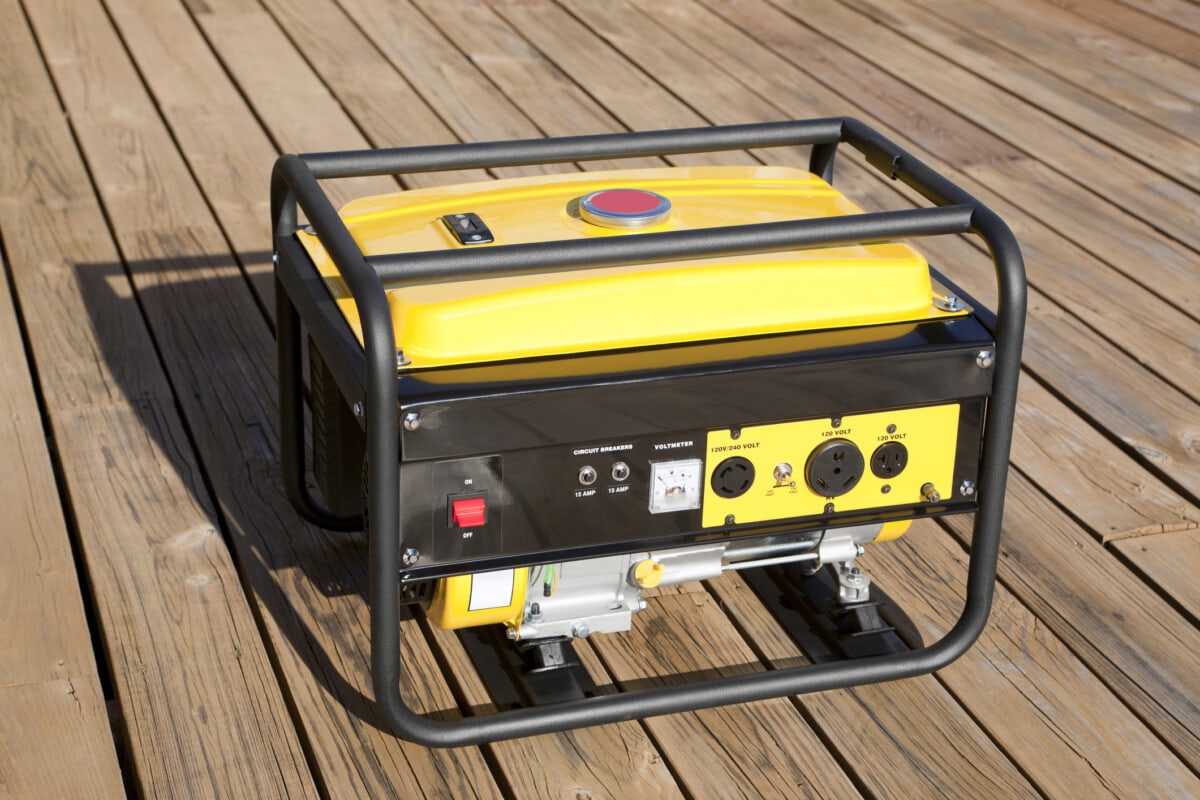
How is wind energy different from other energy sources?
Understanding the differences between wind energy and other energy sources is important when considering alternative power options for your home.
Fossil fuels
Personal generators are a common alternative power source. However, they burn fossil fuels, which release harmful pollutants and contribute to climate change.
Wind power, on the other hand, is a renewable, clean energy source that does not emit greenhouse gasses. Small wind electric systems often can’t produce as much electricity as a generator, though, so you’ll likely need to rely on the power grid or other renewable sources to make up the difference.
Solar power
Wind power is more consistent and reliable in areas with high wind speeds, while solar power is more versatile and can be installed in a wide range of locations. Wind turbines are also more efficient at generating electricity than solar panels – the theoretical maximum for wind turbines is 59%, compared to 23% for solar panels.
Both solar panels and small wind systems are great options for homes and can be used in tandem to create a hybrid system, which is an incredibly efficient way to power your home.
Hydropower
Both wind power and hydropower are clean, renewable energy sources that don’t produce greenhouse gas emissions after they’re built. However, wind turbines can be installed in a wider range of locations and are more versatile, while hydropower requires specific geographical features, such as flowing water or elevation differences.
Small hydropower systems can also have more detrimental environmental effects than a wind turbine.
Geothermal heat pumps
Geothermal heat pumps don’t produce electricity but can efficiently heat and cool your home year-round. Consider pairing your small wind system with a geothermal heat pump to generate electricity and remove your dependence on HVAC systems.
Final thoughts on using wind energy at home
Wind energy is an infinitely renewable energy source and is the second-largest form of renewable energy in the US. However, wind turbines, the method we use to harness the power of the wind, are only partially renewable. Wind turbines also present a few environmental impacts.
You can harness wind energy at home by installing a small wind electric system. These systems can help individual homeowners and businesses lower their electricity bills but require specific conditions and permitting. You can also pair wind systems with other renewable energy sources, such as solar power. Before deciding on a renewable energy source, homeowners should evaluate the advantages and disadvantages of each option based on their geographical location, budget, and energy needs.
Wind energy is very clean and has the potential to become the largest source of renewable energy in the US. It’s also necessary to help decarbonize the country’s power grid and promote energy equity, bringing renewable energy to all.
The post What Is a Home Wind Turbine? How to Use Wind Energy at Home appeared first on Redfin | Real Estate Tips for Home Buying, Selling & More.
from Redfin | Real Estate Tips for Home Buying, Selling & More https://ift.tt/YOeAoNn


No comments:
Post a Comment